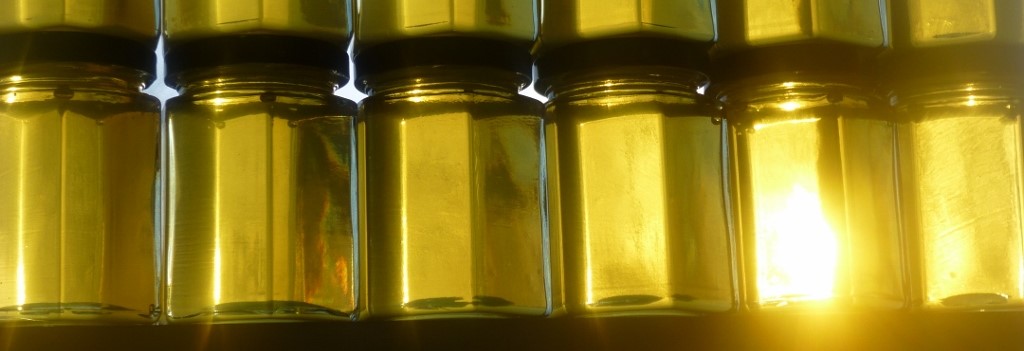If you are a beekeeper and you are selling your honey from shops or a market stall it has to be labelled. There are EU and National regulations regarding what has to be on the label.
Here are the rules simplified:
- Do not mislead the customer and do not make medicinal claims;
- Your label must be legible – so don’t use a teensie-weensie curlie-wurlie font;
- The print must be indelible. Ink jet printed labels will smudge if the jars rub together or if they get wet. Laser printer is better;
- The label should have the word ‘Honey’ on it;
- Honey must contain honey and only honey. There must be NO added ingredients and that includes glucose syrup or honey that has been filtered;
- The label must show the net Quantity in grams;
- There should also be a Best Before date. The Best Before date is quite flexible for honey because it keeps for a long time. Two years from the packing date is fine;
- If you have two labels per jar make sure the Quantity and the Best Before date are visible at the same time;
- In Ireland the label must be in English at least or in English AND Irish;
- You may include one of these descriptions IF YOU LIKE:
- Blossom or Nectar Honey;
- Honeydew Honey;
- Drained Honey (honey obtained by draining uncapped combs);
- Extracted Honey – honey extracted using a honey extractor;
- Pressed Honey (obtained by pressing broodless combs with or without the application of moderate heat not exceeding 45°C)
11. Other types of honey that MUST be labelled as such are:
- Comb Honey ie section honey or cut comb honey;
- Chunk Honey ie a jar of honey containing one or more pieces of comb honey;
- Filtered Honey (“honey obtained by removing foreign organic or inorganic matter in such a way as to result in significant removal of pollen”. Now there’s a thing – surely that’s most of the supermarket stuff?)
- Baker’s Honey (This could be honey that is ‘wet’ ie water content above 20% which leaves is vulnerable to fermentation or it might have a taint, a smell or you may have overheated it). Baker’s honey must also be labelled as ‘Intended for cooking only’.
12. Except for Filtered or Bakers honey IF YOU LIKE you can add:
- The floral origin if the product comes wholly or mainly from that source ie rape honey or heather honey and only if you can be sure – remember – do not try to deceive your customers;
- Regional or topographical origin ie ‘Kerry Honey’ or ‘Kerry Mountain Honey’
13. Lot Number. Now this is important and it is in your own interest as a beekeeper to do this because there is always the possibility you may need to do a product recall. If you do not have lot numbers you will have to recall ALL of it. Furthermore, it may ALL be confiscated and there is no compensation. For beekeepers with more than one apiary a different lot number per apiary and per batch is easily implemented and can be written on the label by hand. Keep a book record with as much detail as possible, such as number of jars per batch, extraction date, packing date etc etc.
14. The country of origin where the honey has been harvested must be stated:
- If your bees live and forage freely in Ireland the honey is Irish Honey;
- If your bees live in China and forage freely in China that honey is not Irish honey;
- If your bees live their lives in a warehouse in Ireland and are fed Texan honey you should be ashamed of yourself and that honey is not Irish honey either.
If you import honey one of the following must be used on your label:
- “blend of EC honeys”
- “blend of non-EC honeys”
- “blend of EC and non-EC honeys”
15. You need to put a name and address on your label sufficiently detailed that you can be contacted by post.
Click here to prise the lid off European Honey Labelling Regulation
Copyright © Beespoke.info, 2015. All Rights Reserved.
